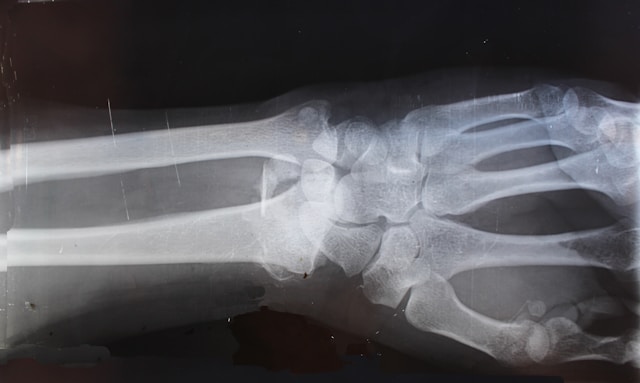Our Blog
What to Do If You Think You May Need an X-Ray

Experiencing an injury or unusual pain can be worrying, and in some cases, an X-ray may be necessary to diagnose the issue accurately. X-rays are a common diagnostic tool used to view the inside of the body, particularly bones, to identify fractures, infections, and other conditions. If you think you may need an X-ray, it’s important to understand the process and what steps to take. At Great Lakes Medical Imaging (GLMI), we are here to guide you through the process and ensure you receive the best possible care. Here’s what you need to do if you think you may need an X-ray.
Recognizing the Need for an X-Ray
Common Reasons for an X-Ray
- Injuries: If you’ve experienced a significant injury, such as a fall, accident, or sports-related trauma, and you suspect a fracture or dislocation, an X-ray can help diagnose the problem.
- Persistent Pain: Unexplained pain that doesn’t improve with rest or over-the-counter medications may require an X-ray to determine the underlying cause.
- Swelling or Deformity: Visible swelling, deformity, or an inability to move a body part properly can indicate a need for an X-ray.
- Chronic Conditions: Conditions like arthritis or osteoporosis often require periodic X-rays to monitor disease progression and treatment effectiveness.
- Infections: Severe infections, especially those affecting the bones or lungs, may be identified or confirmed with an X-ray.
Steps to Take If You Think You Need an X-Ray
1. Consult with Your Healthcare Provider
The first step is to consult with your primary care physician or a healthcare provider. They can evaluate your symptoms, conduct a physical examination, and determine whether an X-ray is necessary. In many cases, a healthcare provider’s referral is required to get an X-ray.
2. Visit an Urgent Care or Emergency Room
If you experience a severe injury or acute pain that requires immediate attention, visit an urgent care center or emergency room. These facilities are equipped to handle urgent situations and can provide X-rays on-site to diagnose the problem quickly.
3. Schedule an Appointment
For non-emergency situations, you can schedule an appointment with a specialized imaging center like Great Lakes Medical Imaging. Your healthcare provider can refer you to us, and we will ensure you receive prompt and accurate diagnostic services.
4. Prepare for Your X-Ray
Once your appointment is scheduled, there are a few things you can do to prepare for your X-ray:
- Wear Comfortable Clothing: Choose loose-fitting, comfortable clothing that is easy to remove if necessary. You may be asked to wear a gown during the procedure.
- Avoid Jewelry: Remove any jewelry, eyeglasses, or metal objects that may interfere with the X-ray images.
- Inform the Technician: Let the X-ray technician know if you are pregnant or suspect you might be, as special precautions may be needed.
What to Expect During an X-Ray
The Procedure
X-rays are quick, non-invasive procedures that typically take only a few minutes. Here’s what you can expect during your X-ray:
- Positioning: You will be asked to sit, stand, or lie down, depending on the area being examined. The technician will position you and the X-ray machine to capture the necessary images.
- Protection: A lead apron may be placed over parts of your body not being imaged to protect you from unnecessary radiation exposure.
- Imaging: The technician will operate the X-ray machine from behind a protective barrier. You will need to remain still and may be asked to hold your breath for a few seconds to ensure clear images.
- Completion: Once the images are taken, the procedure is complete. You can resume your normal activities immediately.
After the X-Ray
After your X-ray, the images will be reviewed by a radiologist, a doctor specialized in interpreting medical images. The radiologist will send a report to your healthcare provider, who will discuss the results with you and outline any necessary next steps.
Follow-Up Care in Buffalo, NY
Based on the X-ray results, your healthcare provider will recommend appropriate treatment or further diagnostic tests. This may include:
- Rest and Recovery: If a minor injury is detected, rest and at-home care may be sufficient.
- Further Testing: Additional imaging tests, such as an MRI or CT scan, may be necessary for a more detailed evaluation.
- Medical Treatment: For more serious conditions, your healthcare provider may suggest medication, physical therapy, or even surgery.
Contact Us for Your Western New York Imaging Needs
At Great Lakes Medical Imaging, we are dedicated to providing high-quality diagnostic imaging services in a comfortable and caring environment. If you think you may need an X-ray or have any questions about the process, please don’t hesitate to contact us. Our experienced team is here to support you every step of the way.
Taking prompt action when you think you need an X-ray can lead to quicker diagnosis and more effective treatment. Whether it’s a minor injury or a more serious condition, GLMI is here to provide the expert imaging services you need to ensure your health and well-being. Schedule your appointment with us today and take the first step towards accurate diagnosis and effective care.
Disclaimer: This blog article is for general informational purposes only and should not be construed as professional medical advice. Always seek the advice of your physician or other qualified health provider with any questions you may have regarding a medical condition.
‹ Back









